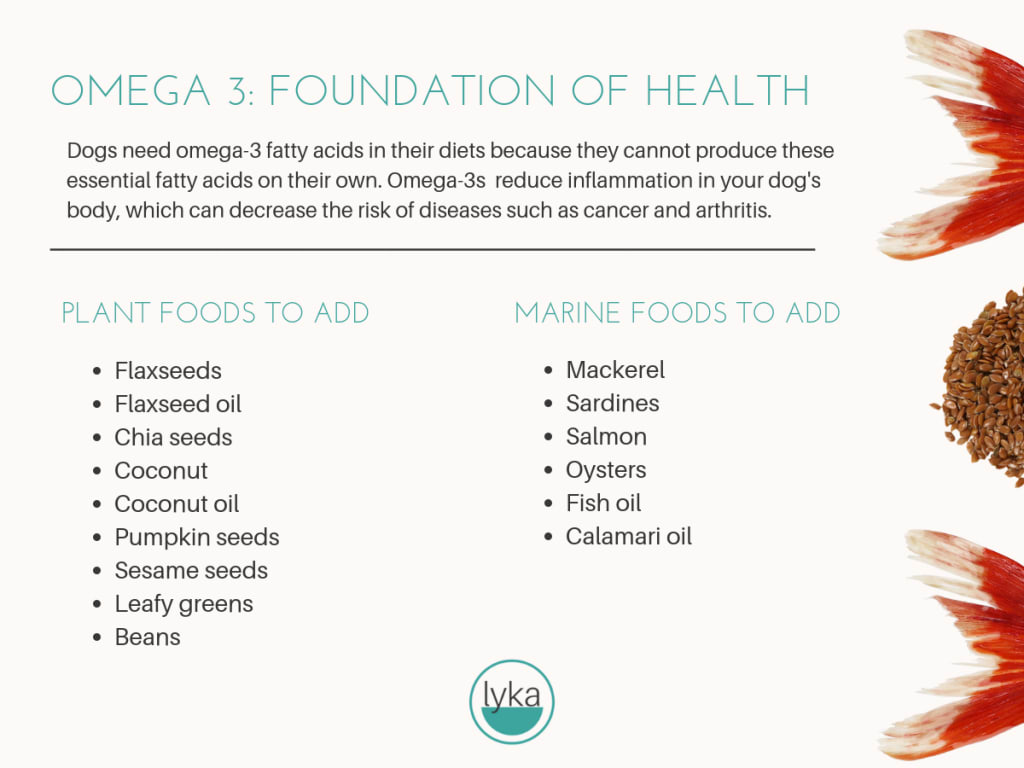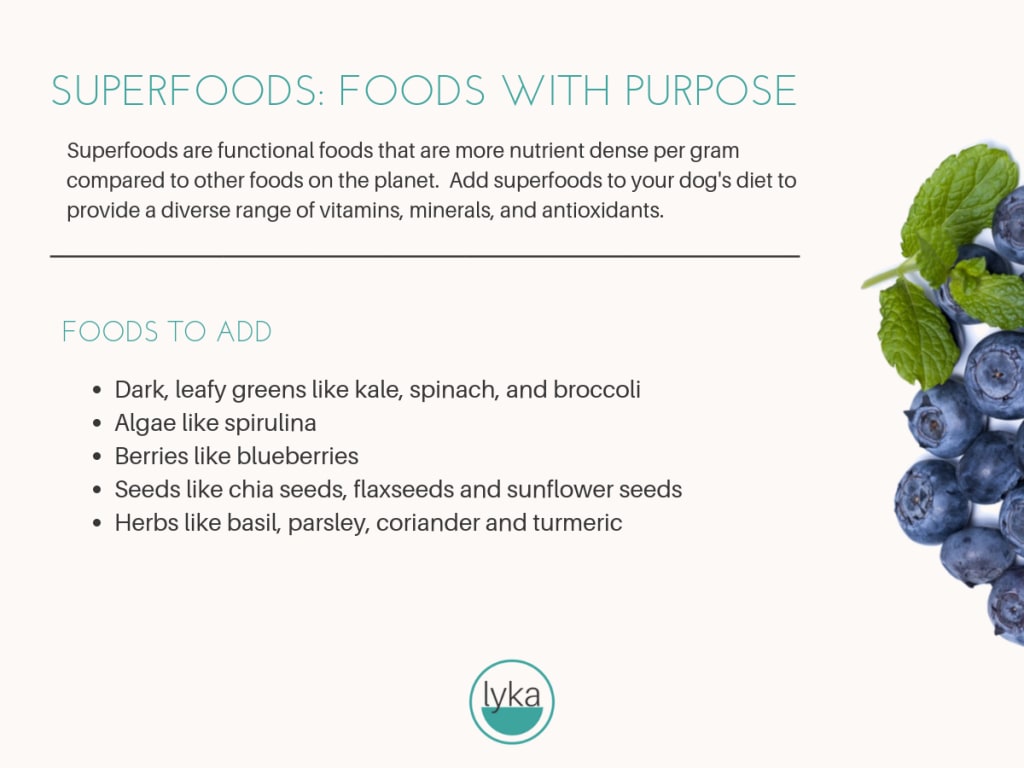“I want to improve my dog’s diet, but I don’t know where to start.”
Does that sound familiar? You may have hopped onto Google to search for some actionable ways to improve your dogs’ diet, but we’re guessing your search left you overwhelmed with the quantity of information, not to mention the conflicting tips. After all, a search for: “best food for dogs” brings up over 2.6 billion results. Jeez!
But don’t worry – we’re here to help! We have analysed the multitude of ingredients and feeding improvements and have narrowed this down to 3 simple and actionable tips on how you can improve your dog’s diet. All of these tips are designed to build the right foundation of your dog’s diet by addressing your dog’s gut microbiome, the cornerstone to good digestion and health.
1.Omega-3: the foundation of a healthy dog
Tip: Add foods into your dog’s diet that are high in Omega 3

Omega-3s are fatty acids that are incredibly important for your dog’s health. A diet high in Omega 3 has been shown to improve most bodily functions in dogs and reduce inflammation in their body, which reduces the risk of diseases such as cancer and arthritis. Emerging studies have also identified that Omega 3s may even aid dogs with certain health conditions. A study from The American Cancer Society shows that a diet supplemented with arginine and fish oil (high in omega 3-fats ) increases the survival time of dogs with cancer by 300 days. Another study undertaken by Ebrahimi et al (2014) shows that a diet containing omega-3 fats, specifically ALA, can help reduce SCD gene expression, which potentially hinders cancer growth.
The three main Omega 3s are EPA, DHA, and ALA. Similarly to humans, dogs can’t produce their own omega-3 fatty acids, hence they are termed as “essential fats” – they must be part of their diet. What’s also important to consider is not just the absolute amount of omega 3 in your dog’s diet, but also the relative amount compared to omega 6, a fatty acid that promotes inflammation and growth. The Association of American Feed Control Officials (AAFCO), who set the nutritional guidelines for Australian pet food, recommends an omega 6 to omega 3 ratio of 30:1\. However, due to the substantial benefits of Omega 3s, we believe the ratio should be 5:1 or lower. In fact all Lyka meals have a maximum omega 6 to omega 3 ratio of 5:1.
There are two main sources of omega-3s in food: plant foods and marine foods. Plant-based fats contain ALA, while the marine-sources contain DHA and EPA. As each type of omega-3 has its own biological effects, it’s necessary to obtain them all from both sources.
2\. A grain-free diet is not a silver bullet
Tip: Avoid high GI carbohydrates

Despite its rising popularity, a grain-free diet should not be the central focus of your dog’s diet. The idea behind a grain-free diet is to eliminate all types of grains. However, this does not necessarily make the diet low carbohydrate or low sugar. In fact, quite the opposite. Many grain-free dog foods can actually have a higher level of simple carbohydrates than those containing grains, due to the grains being simply replaced with other less valuable ingredients.
For example, potatoes, are commonly used as a key ingredient in grain-free pet foods. Potatoes have a high Glycaemic Index (GI) which can spike blood glucose level quickly when consumed and increases the demand for insulin.
A study performed by Carciofi et al. (2008) uncovered that the glucose and insulin level in healthy dogs consuming rice, maize and cassava (high GI foods) rise immediately and higher than dogs having lentils, peas and sorghum (low GI foods). The latter group of observed dogs is also reported to maintain more stable glucose levels for a longer time. Sharps peaks in blood glucose are linked to an increased risk of type-2 diabetes, and in the long-term, may even lead to problems with the pancreas, the organ responsible for insulin production.
3\. Superfoods are ingredients with a nutritional purpose
Tip: Enhance your dog diet with naturally nourishing superfood ingredients

The term superfoods, or functional foods, is now commonplace in our nutritional vocabulary. Superfoods are foods that have more nutrients per gram of volume compared to other foods. They give your dog more bang for their buck. They are high in vitamins, minerals, enzymes and antioxidants, promoting improved health and immunity in your dog’s body.
The rich nutrient contents in superfoods can also help your dog recover faster and build endurance. A study conducted by Dunlap et al (2006) suggests that dogs having blueberries in their diet may get better protection from muscle damage when exercising due to the increased amount of antioxidants in their body.
We hope you find these tips helpful and actionable ways to improve your dog’s diet. Looking for more tips? Check out our posts about organs in your dog’s diet and our healthy snack ideas.









